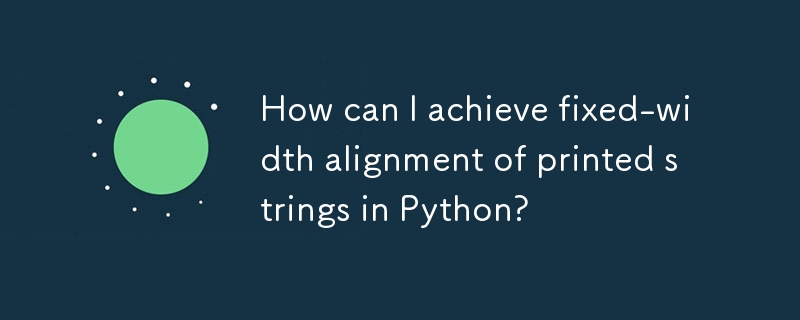
在编程中,为了清晰和视觉组织,通常需要在固定列中对齐字符串。本文探讨了如何使用 Python 中的高级格式化技术来实现此目的。
考虑以下代码,该代码计算给定字符串中所有排列的频率:
# Original code to generate permutations
...
# Printing results
unique = sorted(set(el))
for prefix in unique:
if prefix != "":
print("value ", prefix, "- num of occurrences = ", string.count(str(prefix)))但是,由于字符串长度不同,输出可能会出现未对齐的情况:
value a - num of occurrences = 1 value ab - num of occurrences = 1 value abc - num of occurrences = 1 value b - num of occurrences = 1 value bc - num of occurrences = 1 value bcd - num of occurrences = 1 value c - num of occurrences = 1 value cd - num of occurrences = 1 value d - num of occurrences = 1
要对齐输出,我们可以使用 str具有特定格式说明符的 .format 方法:
# Using str.format for alignment
print("{0: <5}".format("value ") +
"{1: >15}".format(prefix) +
"- num of occurrences = " +
"{2: <5}".format(string.count(str(prefix))))格式说明符:
编辑 1: “{0: <5}”中的“0”指的是传递给 str.format() 的参数的索引。
编辑 2:Python 3 引入f-string 作为 str.format 的简洁替代品:
# Using f-strings for alignment
print(f"{'value ':<5}" +
f"{prefix:>15}" +
"- num of occurrences = " +
f"{string.count(str(prefix)):<5}")优点:
以上是如何在Python中实现打印字符串的固定宽度对齐?的详细内容。更多信息请关注PHP中文网其他相关文章!




